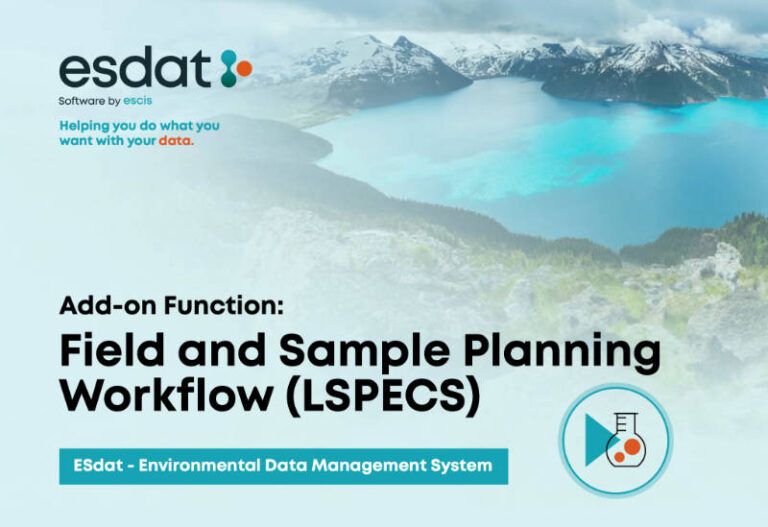Are you confused about the distinction between Australia’s National Environment Protection Council (NEPC) and Environmental Protection Authority (EPA)? Don’t worry; we got you covered.
This article will simplify their differences and help you understand why each plays an important role in protecting our environment. You’ll be an expert on NEPC and EPA before you know it!
Introduction
The National Environment Protection Council (NEPC) and Environmental Protection Authority (EPA) are two important entities created in Australia to protect the environment.
The NEPC is the highest body responsible for setting national standards for protecting human health and the environment from undesirable emissions. It was established in 1998 through the National Environment Protection Council Act (NEPCA).
On the other hand, EPA or Environmental Protection Authority, is one of several government organisations that have been set up at the state and territory levels for implementing NEPC standards. The Environmental Protection Authority works to protect people, communities and their environment from harmful effects caused by human activities such as pollution, hazardous waste management, climate change and land management.
This article will explain their roles and responsibilities in more detail.
Definition of National Environment Protection Council (NEPC)
The National Environment Protection Council (NEPC) is a statutory body that advises the Australian government on protecting the environment. It was established under the National Environment Protection Act (NEPA) in 1991. It advises the Commonwealth and State governments on matters relating to environmental protection, management of natural resources, pollution control and hazardous materials.
The NEPC comprises members from all state and territory governments and representatives from relevant industries, non-government organisations, environmental groups and other stakeholders.
Environmental Protection Authority (EPA) is a state or territory authority responsible for developing policies, regulations and programs for protecting local environments. Each jurisdiction has its own EPA that works with local councils to ensure that development across their region meets legal obligations such as air quality standards or water protection plans. Typically EPAs are charged with enforcing regulations related to air quality management, land use planning, waste pollution control, protected areas management and water conservation.
Definition of Environmental Protection Authority (EPA)
The Environmental Protection Authority (EPA) is Australia’s main independent regulator for upholding environmental standards. The EPA is responsible for licensing, certifying and regulating activities that may harm the environment; this includes releasing pollutants, managing hazardous waste, and ensuring that best practice standards are met. The EPA ensures that people in Australia can go about their lives while protecting them from risks to human health and the environment. In doing so, they assess environmental applications and develop strategies to reduce environmental and human health impacts.
NEPC, on the other hand, is a multi-jurisdictional legislative body established by Commonwealth, State and Territory governments in Australia that aims to protect the environment by coordinating regulations between jurisdictions across Australia. The NEPC sets environmental standards which all levels of government must adopt to reduce air pollution and noise pollution, protection of water catchment areas, reducing land clearing rates, among others. NEPC also sets principles around natural resource management, including involving Indigenous groups in decision-making processes concerning sustainable land use practices.
Role of NEPC
The primary role of the National Environment Protection Council (NEPC) is to protect Australia’s environment from threats, both natural and man-made. The NEPC does this by developing national Australian Environmental Protection Strategies (AEPS). The AEPS is designed to address issues of critical environmental importance by providing collaborative management frameworks for multiple government agencies, industry stakeholders, and research organisations.
The AEPS is centred on five core goals which are as follows:
1. Maintain and improve the quality of the environment;
2. Sustain ecosystems;
3. Minimise compliance costs;
4. Enhance public health; and
5. Achieve regional cooperation with neighbouring countries.
The NEPC comprises nine ministers representing Australia’s federal, state, and territory jurisdictions responsible for environmental protection in the country, as well as local government reps, NGO representatives, academics, industry stakeholders, and Aboriginal representatives. The NEPC’s decision-making process is guided by established principles that focus on transparency in regulatory development activities with a precautionary approach to detecting potential environmental risks while considering existing economic and social factors.
In contrast to the NEPC’s role in setting national standards for environmental protection through its AEPS strategy framework, the Environmental Protection Authority (EPA) is mainly focused on implementing specific standards in each jurisdiction independently to ensure adherence to those standards through its actions such as auditing pollutant release sites or inspecting compliance records from businesses or industries involved in areas that may have detrimental impacts on the environment due to their activities. The EPA also monitors species protection programmes and advises other government bodies about relevant issues, such as waste management strategies or air pollution prevention initiatives, to help achieve its goals for improved environmental protection locally within respective jurisdictions across Australia.
Role of EPA
The Environmental Protection Authority (EPA) in Australia is the national environment regulator responsible for nationally consistent environmental protection and standards. The EPA works closely with all levels of government, businesses and mines, and other stakeholders to ensure that the environment is managed and protected sustainably.
The EPA develops policies, regulations, and tools needed to protect the environment. The EPA also provides advice on environmental matters across different jurisdictions to governments, industry sectors or businesses, including on environmental approval processes.
The EPA is responsible for implementing Australian Government environmental policies and supporting businesses in their decisions about reducing their environmental impacts. This includes conducting research into priority areas such as climate change; energy efficiency; water management; waste management; biodiversity conservation; land use planning; air pollution control; soil protection; hazardous material management; sustainable production systems; regulatory compliance monitoring; public consultation processes, and education programs.
The EPA’s role actively involves assessing, recommending and reporting on the full range of regulatory assessments required by state government legislation for projects that may impact national parks, marine reserves or other protected areas or species under their jurisdiction.
Relationship between NEPC and EPA
The National Environment Protection Council (NEPC) is a national intergovernmental body that works collaboratively to protect, conserve and enhance the Australian environment. It operates under the auspices of the Environment Protection Authority Act 1993 and works closely with all State governments to explore, develop, refine and implement Environmental Quality Guidelines.
The NEPC also develops national legislation and provides guidance on best practices for all governments and agencies in dealing with environmental legislation.
The Environmental Protection Authority (EPA) works closely with the Federal government, State governments and local authorities to ensure environmental quality standards are met or exceeded across Australia. As independent agencies within each state, EPAs set standards for air, water and land management within their state’s jurisdiction. They administer environmental laws and regulations as well as public awareness campaigns to encourage behaviour changes that positively impact our environment. Working closely with other agencies, such as the NEPC, EPA takes action when activities fail to meet existing guidelines or breach existing regulations.
In conclusion, both organizations serve an important role in ensuring a safe environment for Australians by setting and implementing Environment Quality Guidelines inspired by input from multiple stakeholders at all levels of government.
You can find Pre-compiled Australian environmental guidelines and standards on the ESdat website. ESdat is developed in Australia, where EarthScience Information Systems Pty Ltd (EScIS) was founded. EScIS has provided ESdat environmental data management solutions to Australian scientists and engineers for almost two decades.
Conclusion
In conclusion, there are clear differences between the responsibilities of the National Environment Protection Council (NEPC) and the Environmental Protection Authority (EPA) in Australia. The NEPC is an independent body that sets Nationally Accepted Standards for controlling environmental risks through its amendments. The state-based EPA enforces these standards by issuing licenses, permits and plans. Its role is to ensure that businesses, individuals and communities comply with the relevant government regulations regarding the protection of air, water, soil and natural resources.
These bodies have separate functions, but they work together to ensure safe environmental standards in Australia while considering social values and economic needs.
To fully understand the differences between the National Environment Protection Council (NEPC) and the Environmental Protection Authority (EPA) in Australia, it is important to be familiar with each organisation’s different roles and responsibilities.
The NEPC is an intergovernmental body that aims to protect, conserve and improve the environment across Australia by developing and managing national environment protection measures (NEPMs). These NEPMs are legally binding on all governments. On the other hand, in each state or territory of Australia, there is also an independent government agency known as an Environmental Protection Authority (EPA). Each EPA is responsible for approving pollution licences and taking enforcement action where necessary. They are also responsible for ensuring that laws are followed concerning any facilities requiring a pollution licence.
In addition, EPAs may advise their particular state or territory government on environmental matters, including land use planning, waste management policies and others. As such, unlike NEPCs that only manage National Environment Protection Measures (NEPMs), EPAs can tailor policies for individual states or territories, which must be adhered to within those regions.

More on the EPA and NEPC
What is ProUCL Software | US EPA?
What are Regional Screening Levels EPA RSL 1.0 and EPA RSL 0.1?
What is the National Environment Protection Council NEPC in Australia?
What are Environmental Quality Guidelines for Alberta Surface Water?
What are DE HSCA Environmental Standards?
What is The Protection of Environmental Operations Act (POEO Act)
Australian Environmental Standards: laws that protect the environment in Australia.







[…] What is the difference between Australia’s national environment protection council (NEPC) and the … […]
[…] What is the difference between Australia’s national environment protection council (NEPC) and the … […]